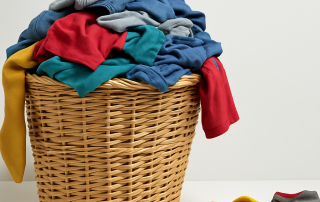Keeping your wardrobe in tip-top shape throughout the year can feel like a daunting task, especially when it comes to seasonal garments like winter coats and summer dresses. These items often require special care to ensure they remain in excellent condition, year after year. Whether you’re facing the chill of winter or the heat of summer, taking the time to properly care for your clothes can extend their lifespan and keep them looking as good as new. Let’s dive into the best practices for seasonal garment care, so your clothing stays fresh, vibrant, and ready to wear, no matter the season.
1. Understanding the Importance of Seasonal Garment Care
Before we jump into the tips, it’s important to understand why seasonal garment care is crucial. Seasonal clothing, such as heavy winter coats or delicate summer dresses, often undergoes specific wear and tear due to varying weather conditions. Proper care ensures that these garments not only last longer but also maintain their original look and feel, saving you money in the long run by reducing the need for frequent replacements.
2. Storing Winter Garments
Winter garments, like coats, sweaters, and scarves, are often made from materials like wool, down, and fleece that require special care during storage. Here’s how to protect these items when winter is over:
a. Clean Before Storing
Before you pack away your winter clothes, make sure they’re clean. Dirt, sweat, and oils can attract pests and cause stains to set over time. For woolen items, consider dry cleaning them before storage. If you’re storing items at home, ensure they are completely dry to prevent mildew.
b. Use Proper Storage Containers
Invest in breathable garment bags or cotton storage bins to store your winter clothes. Avoid plastic bags as they can trap moisture, leading to mold growth. Cedar blocks or lavender sachets can be added to deter moths and keep your clothes smelling fresh.
c. Store in a Cool, Dry Place
Choose a storage spot that’s cool, dry, and away from direct sunlight to prevent discoloration. Attics and basements can be risky due to fluctuating temperatures and humidity levels, so consider a closet or under-the-bed storage.
3. Preparing Summer Clothes for Off-Season Storage
Summer clothes, while lighter and often less expensive than winter garments, also need proper care before they’re stored away during the colder months.
a. Wash and Mend
Just like with winter clothes, make sure your summer garments are clean before storing. Pay special attention to removing sunscreen, sweat, and other stains. Check for any small tears or loose threads and mend them before packing your clothes away.
b. Fold Don’t Hang
Fabrics like cotton and linen, which are common in summer wear, are prone to stretching if hung for long periods. Instead, fold these items neatly and store them in breathable fabric boxes or bins.
c. Protect from Sunlight and Pests
Store summer clothes in a dark, dry place to avoid fading from sunlight. Adding lavender sachets or cedar chips can help keep pests away without leaving a strong chemical smell.
4. Caring for Woolen and Cashmere Items
Wool and cashmere are luxurious, warm fabrics that require extra attention to maintain their softness and shape.
a. Gentle Washing Techniques
Hand wash woolen and cashmere items using a mild detergent. If you must use a machine, opt for a delicate cycle with cold water. Never wring out these garments as it can distort the fabric; instead, lay them flat to dry on a towel.
b. Brushing and De-pilling
Use a cashmere comb or fabric shaver to remove any pills that form on the surface of your sweaters or scarves. A soft-bristle brush can help maintain the softness of the wool fibers.
c. Store Carefully
When storing, fold your wool and cashmere items rather than hanging them to avoid stretching. Use a breathable storage bag and keep them in a cool, dry place, adding a few cedar balls to ward off moths.

5. Protecting Leather and Suede Garments
Leather and suede garments add a touch of luxury to any wardrobe but can be tricky to care for.
a. Regular Conditioning
Leather items, like jackets and boots, benefit from regular conditioning to keep the material supple. Use a high-quality leather conditioner and apply it as per the product instructions.
b. Waterproofing
For suede items, consider applying a waterproof spray to protect them from water damage. Always test a small, hidden area first to ensure it doesn’t alter the color or texture.
c. Storage Tips
Store leather and suede items in a cool, dry place, and use padded hangers to maintain their shape. Avoid plastic covers as they can cause the material to dry out and crack over time.
6. Taking Care of Delicate Fabrics
Delicate fabrics like silk and chiffon, often found in summer dresses and special occasion outfits, need to be handled with care.
a. Hand Washing and Drying
Hand wash delicate fabrics using a mild detergent and cold water. Gently swirl the garment in water without scrubbing. After washing, do not wring out the water; instead, roll the garment in a towel to absorb excess moisture, then lay flat to dry.
b. Storing Delicate Items
Store delicate fabrics in breathable cotton bags. If you’re hanging these items, use padded hangers to prevent the fabric from stretching or getting snagged.
7. General Maintenance Tips Year-Round
In addition to seasonal storage, maintaining your garments throughout the year is key to their longevity.
a. Rotate Your Wardrobe
Rotating your wardrobe by season not only gives your clothes a rest but also prevents wear from constant use. This simple practice can extend the life of your favorite pieces.
b. Address Stains Immediately
Tackling stains as soon as they occur can prevent them from setting and becoming permanent. Keep a stain removal pen or wipes handy for quick fixes on the go.
c. Regular Inspections
Regularly inspect your garments for any signs of wear, such as loose threads, missing buttons, or small tears. Addressing these issues promptly can prevent them from worsening.
8. Investing in Professional Garment Care
Sometimes, your garments may require more than just at-home care. Investing in professional services like dry cleaning can be crucial for certain fabrics and garments.
a. When to Dry Clean
Dry clean items that are labeled as “dry clean only” or those made from delicate fabrics like silk, wool, and cashmere. Be sure to use a reputable dry cleaner who understands the specific needs of these fabrics.
b. Tailoring Services
Regular tailoring can keep your clothes looking sharp and well-fitted. Whether it’s adjusting the hem of a dress or taking in the waist of a coat, proper tailoring can enhance both the look and longevity of your garments.
9. Eco-Friendly Garment Care Practices
Incorporating eco-friendly practices into your garment care routine not only protects your clothes but also the environment.
a. Use Eco-Friendly Detergents
Opt for eco-friendly detergents that are free from harsh chemicals. These are gentler on your clothes and better for the environment.
b. Cold Water Washes
Whenever possible, wash your clothes in cold water. It’s less harsh on fabrics and helps reduce energy consumption.
c. Air Dry When Possible
Air drying is gentler on fabrics than machine drying and helps conserve energy. For heavier items like coats and jeans, lay them flat on a towel to dry.
10. Conclusion: Keeping Your Clothes Looking Great Year-Round
Seasonal garment care is all about giving your clothes the attention they need, when they need it. By following these tips, you can ensure that your wardrobe stays fresh, clean, and ready for whatever the weather throws your way. From storing winter coats to washing delicate summer dresses, these best practices will help you protect your investment in your wardrobe, allowing you to enjoy your favorite pieces for many seasons to come.
Check out our Facebook for more news!
FAQs
Q1: How often should I clean my winter coats?
A1: It’s best to clean your winter coats at the end of the season before storing them. This removes any dirt and oils that can cause damage over time.
Q2: Can I store my clothes in plastic bags?
A2: It’s not recommended as plastic bags can trap moisture, leading to mold and mildew. Use breathable fabric storage bags instead.
Q3: How do I prevent my sweaters from pilling?
A3: Gently brush your sweaters with a fabric comb or use a fabric shaver. Avoid excessive friction, like rubbing against rough surfaces, which can cause pilling.
Q4: What’s the best way to store leather jackets?
A4: Store leather jackets on padded hangers in a cool, dry place. Avoid plastic covers as they can dry out the leather.
Q5: How can I keep moths away from my woolen clothes?
A5: Store woolen clothes with cedar blocks or lavender sachets, which naturally repel moths without the need for chemicals.




